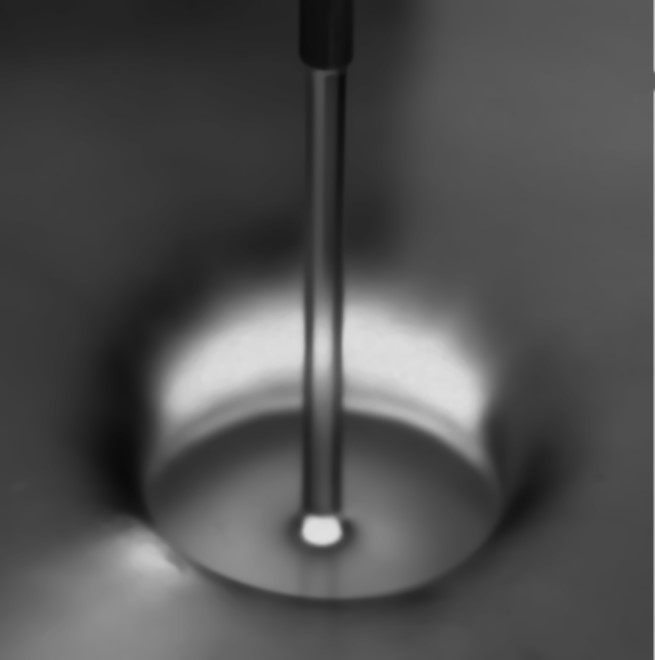Follow us on Google News (click on ☆)

Photograph of a circular hydraulic jump. The jet diameter is about 0.035 inches (0.9 mm).
© Goerlinger and al.
When a vertical jet of water strikes a flat surface -for example, the bottom of a sink- a circular liquid wall forms around the impact. This phenomenon of "hydraulic jump", observed for a long time, can become oscillating: the liquid wall opens and closes several times per second, and under certain conditions these oscillations continue as long as the system is not disturbed. A research team from the Institute of Electronics, Microelectronics, and Nanotechnology (IEMN, CNRS/University of Lille/Polytechnic University Hauts-de-France) has for the first time reported this phenomenon, identified the parameters that govern its spontaneous appearance, and proposed an explanation of its mechanism.
To study the hydraulic jump experimentally, the researchers used a water jet less than 0.039 inches in diameter, projected through a needle onto a plexiglass disc. The formation and evolution of the hydraulic jump around the jet are observed with a camera placed below the disc. By varying the parameters of the experiment, the team showed that a stable oscillation only forms over a range of flow rates (between 0.061 and 0.074 fl oz/s), but once established, its period is independent of the flow rate. However, the oscillation period increases with the size of the discs used, whose radius varied from about 0.4 to 2.4 inches.
To account for these observations, a theoretical model of the water layer on the disc, in which the jump generates ripples (gravity waves), was developed. It showed that the disc acts as a cavity for these waves and observed that the oscillation frequency of the jump measured experimentally always corresponds to a natural frequency of the cavity predicted by the model.
The layer of liquid on the disc thus acts as a soundboard for the ripples, and it is the periodic variations in the height of the water layer that cause the oscillations of the hydraulic jump. The model also predicts the correlation between the oscillation period and the disc radius, as observed experimentally.
Additionally, the study showed that by offsetting the jet impact on the disc, other oscillation frequencies were obtained. Finally, using two simultaneous jets, two synchronized jumps that oscillate in phase opposition can be achieved.
These results could help improve the efficiency of water jets used for cleaning or cooling in industrial processes by avoiding the formation of the hydraulic jump. On a more fundamental level, the team plans to explore the influence of other parameters such as fluid viscosity and the disc's surface roughness or even increase the number of jets.
References:
Oscillations and Cavity Modes in the Circular Hydraulic Jump.
Aurélien Goerlinger, Michael Baudoin, Farzam Zoueshtiagh, and Alexis Duchesne.
Physical Review Letters, 8 November 2023.
https://doi.org/10.1103/PhysRevLett.131.194001
Article available on the open archive base Arxiv